A selection of photos from the past that make you wonder (21 photos)
I present to your attention a new selection of colorized photographs. As always, it contains pictures that surprise, touch and sometimes make you smile. Enjoy! 
A shoe store advertising car parked in front of a Presbyterian church. San Francisco, California. 1922. 
The "boot" car was built on a 1921 Chevrolet chassis and belonged to successful shoe merchants Albert and Henry Peters, who ran the Peters' Brothers Shoe Co. in Oakland and San Francisco. In their publication "Boot and Shoe Recorder" they wrote: "This is more than just an advertisement, however, for it is a very practical delivery truck. It has a seat in the back that will comfortably seat two people, and there is still plenty of room for packages."
Engineer Eduard Melnikov rides in a unique scooter-wheel of his own invention. A still from the popular science film "Journey to the Land of Eccentrics". Film studio "Lennauchfilm". Leningrad, 1979. 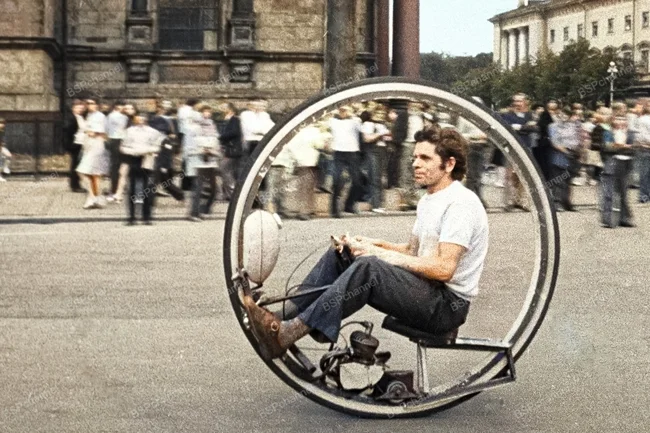
This unusual type of transport is called an introcycle - a type of monocycle in which the driver is located inside the wheel itself. The first manual and pedal-powered introcycles appeared at the end of the 19th century - they were patented and built at that time as an interesting engineering experiment. In the 20th century, most of these devices became motorized, which significantly increased their speed and practicality. According to some sources, the world speed record for an introcycle is 98.464 km/h.
Painters on the roof of the Woolworth Building in New York City. 1926. 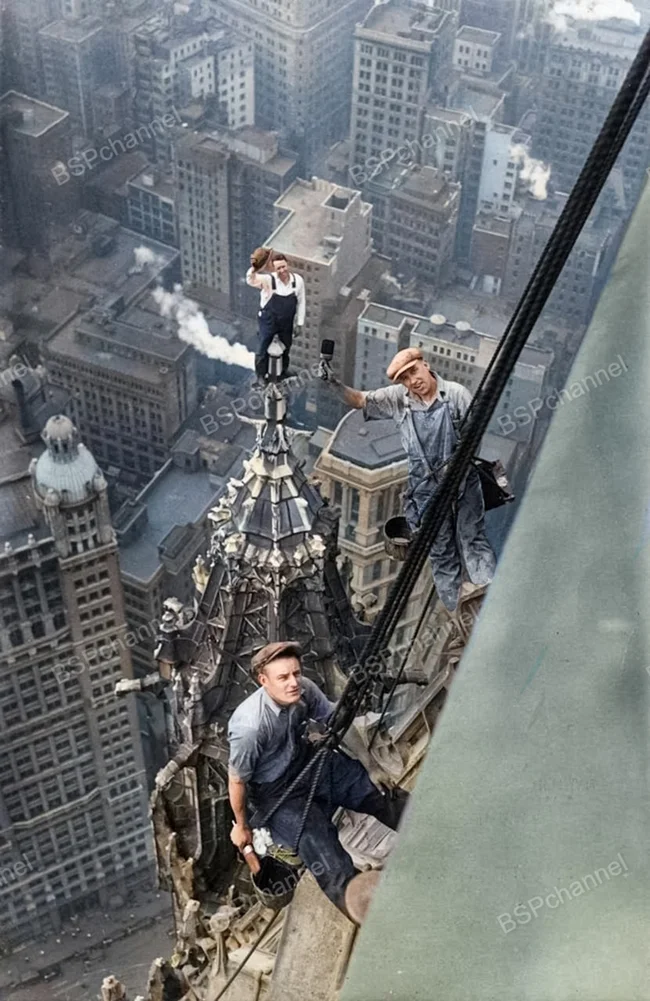
The Woolworth Building, built in Manhattan between 1911 and 1913, was originally intended to be the headquarters for Frank Woolworth's retail empire, one of the largest retail chains of the time. The building housed 60 of the company's stores, as well as about 4,000 offices for various large companies. With a height of 241 meters (57 floors), it was the tallest building in the world from 1913 to 1930. The 58th floor has an observation deck with panoramic views of New York City. The cost of construction was $13.5 million, which was a colossal sum at the time.
The Filipino dwarfs (brother and sister), circa 1914. 
Martina and Juan were born in a small village on the island of Panay in the Philippines, in a family where there were three other children besides them. Martina was 53 cm tall and weighed 33.5 kg, her brother Juan was 61 cm tall and about 23 kg. The brother and sister were distinguished by their bright charisma and brilliant intellect. They were fluent in five languages: they spoke three Philippine dialects - Tagalog, Visayan, and Kapampangan - as well as English and Spanish. Martina and Juan's parents were Filipinos of average height, without any physical disabilities, like the rest of the children in the family. Juan later married a 36-year-old woman of average height, and they had a daughter, Maria, a beautiful girl with normal development. Unfortunately, she died in 1907 at the age of three, by which time her height was the same as her father. In the late 19th and early 20th centuries, Martina and Juan were considered the smallest people in the world. They performed together, showing dance numbers, and Juan additionally amazed the audience with acrobatic tricks, demonstrating incredible dexterity and artistry.
The Human Cannonball. Berlin, Germany, 1920. 
Photographer: George Rinhart
One of the most spectacular and grandiose stunts in the history of circus art has been successfully performed: a woman, shot from a cannon, landed in a protective net at a distance of 40 meters. The cannon itself, used for the stunt, is impressive in its size: its weight is 50 tons, its length is 10 meters.
Ka-25PS saves sailors from the sinking ship "Svobodny". Kuril Islands, 1977. 
The story of this rescue operation is truly dramatic. The border patrol ship Iceberg, sailing along the Kuril Islands to monitor fishing activities, had a Ka-25 deck helicopter on board. When a strong storm broke out, the ship went into shelter, but suddenly an SOS signal was heard on the air - the trawler Svobodny was sinking. The captain of the Iceberg immediately decided to go to help. Another fishing trawler responded to the distress signal, arrived first and lowered a launch. However, the waves were so high that the rescue boat capsized, and its crew ended up on the already sinking vessel. The Ka-25 pilots faced an almost impossible task: landing in stormy conditions, limited visibility, no landing site. But the Ka-25, one of the most reliable Soviet anti-submarine helicopters, proved itself in difficult conditions. The helicopter crew demonstrated exceptional skill and composure. Due to the fact that the Svobodny accidentally ran aground, the vessel did not immediately sink into the deep, which gave a chance for rescue. The helicopter worked for almost 12 hours, staying in the air for about 8 hours, making many round trips. As a result, 36 lives were saved. The participants in the operation were awarded for courage, heroism and professionalism - their feat became one of the brightest examples of the effectiveness of maritime rescue aviation in extreme conditions.
French wrestler Andre René Roussimoff, better known as "Andre the Giant", during a fashion show, 1966. 
Andre the Giant (real name Andre Rene Roussimoff) is one of the most famous and fearsome wrestlers in the history of world professional wrestling. He was called "The Giant", "The Invincible" and simply "The Biggest Man in the World", and he had these nicknames for a reason. His height was about 216 cm (according to various sources - up to 224 cm) Weighed more than 230 kg.
Superstitious people push a child through a crack in a "healing tree" to cure him of rickets. Sweden, 1918. 
Police examine a marijuana plant at Van Nuys Prison. Los Angeles, USA, 1951. 
Port wine trade at Barrikadnaya metro station. Moscow, 1992. 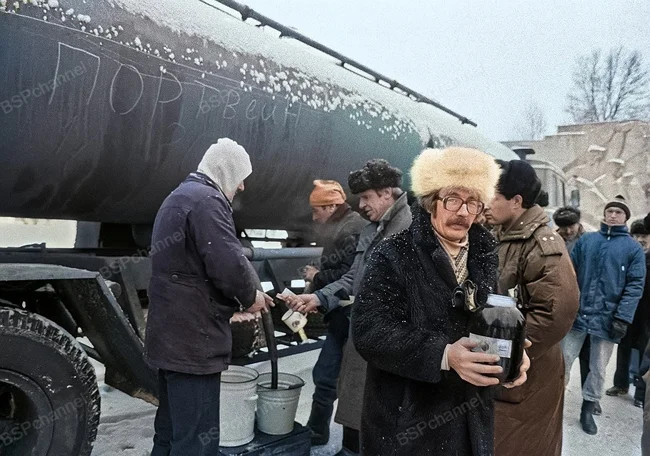
Although I don't have warm feelings about the 90s in our country, I still decided to include this photo in the collection. Three decades later, it looks almost like a scene from an alternate reality.
The sinking of the Morro Castle, 1934. A crowd gathered on the beach next to the still smoldering wreckage of the Morro Castle. 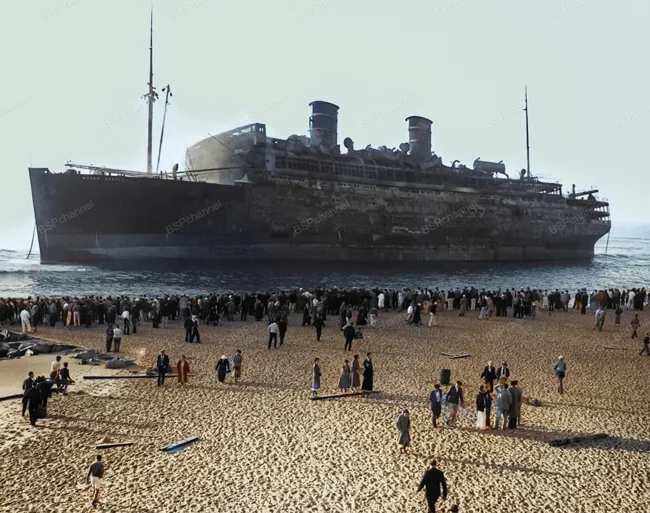
The Morro Castle was an American ocean liner that sailed between Havana and New York City in 1930–1934. It could accommodate 489 people, and had a crew of 240. The tragedy occurred on September 8, 1934, en route from Havana to New York. At 2:50 a.m., a fire broke out in one of the ship's storage areas. The fire quickly engulfed the ship, destroying the electrical wiring and depriving the Morro Castle of communications and control. As a result of the disaster, 137 passengers and crew members died. The ship drifted out of control and eventually ran aground in shallow water off Asbury Park in New Jersey, where its charred wreckage remained for a long time.
A tightrope walker's wedding. France, 1959. 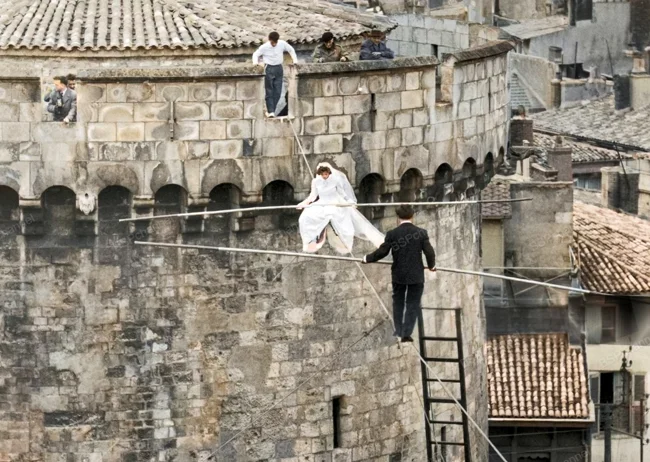
At a height of 20 meters above the ground, suspended on an 80-meter cable between two towers of the La Rochelle harbor, aerialists Roland Schmidt and Francine Paris exchanged wedding vows, sealing their hearts in an unusual and spectacular ceremony - right on the rope.
Testing a new fireproof building material. New Haven, 1949. 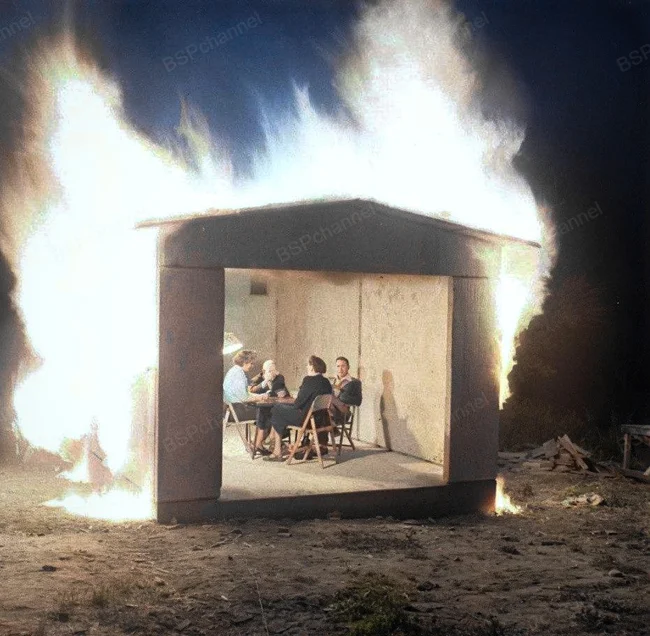
Vibrating bra for breast enhancement, 1971. 
Ames Aeronautical Laboratory. USA, California, 1948. 
A mother puts her children to sleep in bunks aboard a Pan American Airways Boeing 377 Stratocruiser, 1949. 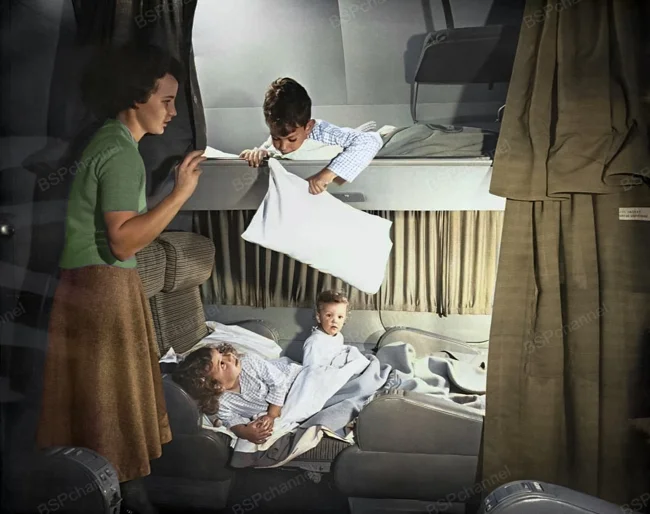
The hull of the German airship Graf Zeppelin, repaired over the South Atlantic, 1933. 
The creator of the airship was the German engineer and aircraft designer Ferdinand von Zeppelin. The idea to build a controlled airship came to him after a flight in a hot air balloon, which he made during the American Civil War, observing the fighting as a military observer. His main creation was the airship "Graf Zeppelin" - one of the most famous and successful in the history of aeronautics. In 1929, it made the first round-the-world flight, becoming a symbol of technological progress and the era of airships.
Tightrope walker Henry Rechatin balances on the roof of a Renault 4L, which in turn balances on a cable, high above the Saint-Laurent Valley, Rochefort, 1967. 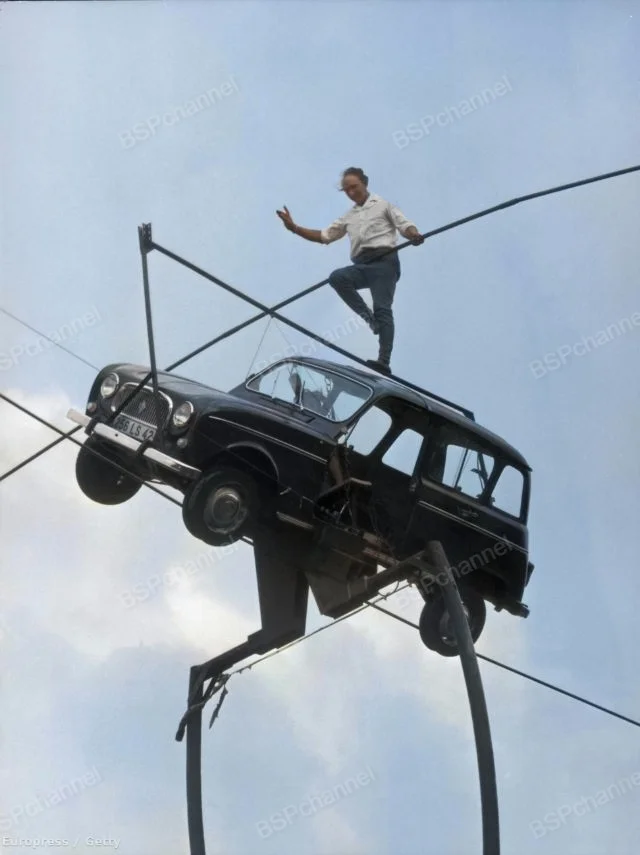
The wreck of the Princess May. Alaska, August 5, 1910. 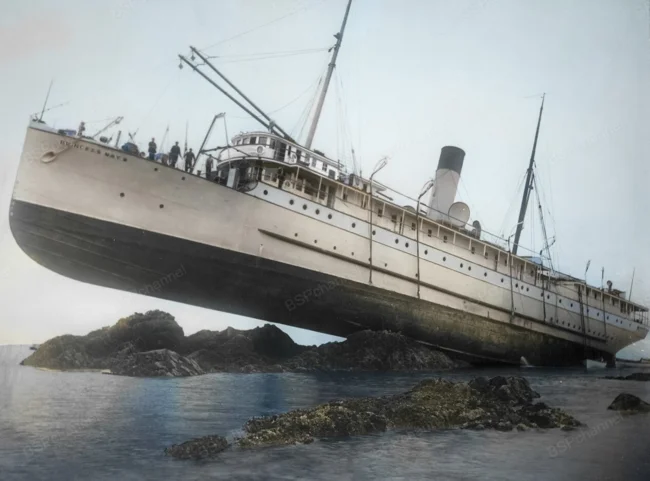
Photographer: Keays William Howard
Welsh wrestler Adrian Street with his father, 1974. 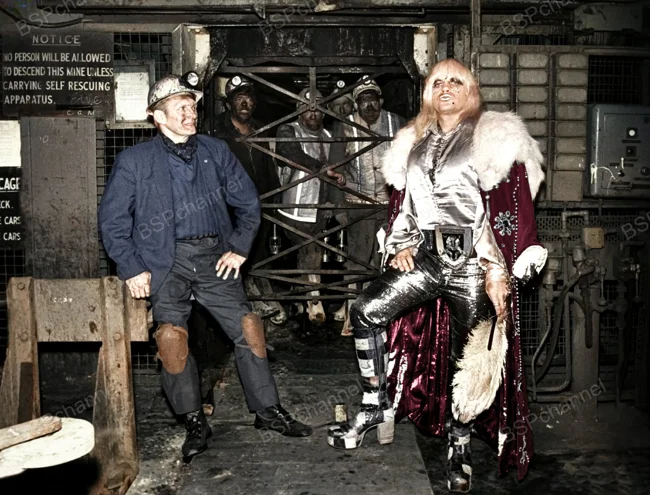
Interestingly, Adrian Street proposed to his long-term partner and manager Miss Linda at a meeting of wrestling veterans - and got married at the age of 65. And yes, despite his bright, provocative image in the ring, Adrian never behaved vulgarly outside of it. His image was just part of the show - a smart and daring mask created to evoke a reaction, and in life he remained modest, balanced and deeply devoted to his chosen one.






























